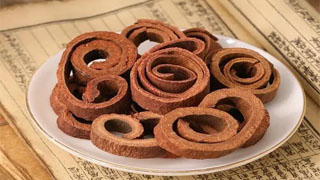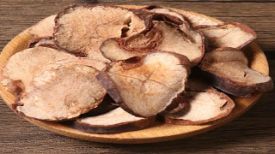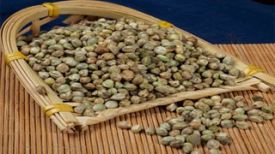
1. Alias
Mushroom Gui, Da Gui, Tong Gui, La Gui, Yu Gui, Mu Gui, Zi Gui, Cinnamon, Gui.
2. Plant morphology
Trees, with gray brown bark. The bark of the old tree is about 1.3 centimeters thick, and the young branches are often four edged and covered with brown hairs. Leaves alternate or nearly opposite, leathery, rectangular to nearly lanceolate, 8-20 cm long, 4-5.5 cm wide, green on top, hairless, midrib and lateral veins clearly concave, sparsely furry below, with basal three out veins, petiole 1.5-2 cm long. The inflorescence is axillary or near apical, measuring 8-16 cm in length. The flowers are small, white, with 6 petals and no longer than 2 mm in length compared to the perianth tube. It can bear 9 stamens and has 4 anthers. The third round of stamens and anthers have outward petals, and the ovary is ovate, hairless, slender, and has a small stigma. The fruit is elliptical, 1 centimeter long, 9 millimeters in diameter, and black purple in color. The flowering period is from June to July, and the fruiting period is from October to December.
3. Origin distribution
Cultivated in sandy or mountainous areas. Distributed in Yunnan, Guangxi, Guangdong, and Fujian.
4. Harvesting and processing
Peel more than in autumn, dry in the shade, remove impurities and rough skin, and crush when used.
5. Characteristics of medicinal herbs
This product is in the shape of a groove or roll, measuring 30-40 centimeters in length, 3-10 centimeters in width or diameter, and 0.2-0.8 centimeters in thickness. The outer surface is gray brown, slightly rough, with irregular fine wrinkles and horizontally protruding skin holes, and some visible gray white stripes; The inner surface is reddish brown, slightly flat, with fine longitudinal lines and visible oil marks when scratched. Hard and brittle in texture, easy to break, with an uneven cross-section. The outer layer is brown and rough, while the inner layer is reddish brown and oily. There is a yellow brown line between the two layers. Strong aroma, sweet and spicy taste.
6. Sexual Taste Returning to the Classics
Hot in nature, spicy and sweet in taste. Return to the Kidney Meridian, Spleen Meridian, Heart Meridian, and Liver Meridian.
7. Effect and Function
Tonifying fire and aiding yang, igniting fire to return to the original energy, dispersing cold and relieving pain, warming and promoting meridians. Belonging to Wenli medicine.
8. Clinical application
Oral administration: 1-4.5 grams, not suitable for long-term frying; At the end of the study, 0.5-1.5 grams; Or take pills. External use: appropriate amount, grind to powder, adjust and apply; Soak in wine and rub. Used for impotence, uterine coldness, lower back and knee pain, wheezing due to kidney deficiency, floating yang due to deficiency, dizziness, red eyes, cold and abdominal pain, vomiting and diarrhea due to deficiency cold, cold hernia, abdominal pain, dysmenorrhea and amenorrhea.
9. Pharmacological research
It has a mild stimulating effect on the gastrointestinal tract and can relieve smooth muscle spasms in the gastrointestinal tract, with strong anti ulcer effects; Can antagonize platelet aggregation, have the effect of improving the cardiovascular system, and regulate the immune function of the body; It has sedative, analgesic, antipyretic, and anticonvulsant effects on the central nervous system; It has a preventive and protective effect on models of Yang deficiency and Yin deficiency; Has a certain anti-inflammatory effect; Has a strong fungicidal effect; Anti-tumor; Raising serum triglycerides in mice has a significant reducing effect and can prolong the survival time of mice with sodium nitrite poisoning. Cinnamaldehyde contained in cinnamon has a significant sedative effect on mice, manifested as reduced spontaneous activity, resistance to excessive activity caused by methamphetamine (Methamphetamine), dyskinesia caused by the spinning stick test, and prolonged anesthesia time with pentobarbital sodium.
10. Chemical composition
Cinnamon contains 1.98% -2.06% volatile oil, mainly composed of cinnamaldehyde, accounting for 52.92% -61.20%, as well as components such as cinnamyl acetate, benzyl benzoate, trans cinnamic acid, and cinnamic glycosides.
11. Usage taboos
Yin deficiency and excessive fire, with solid heat inside, excessive bleeding due to blood heat, and pregnant women are prohibited from taking it, fearing red stone fat.
12. Compatibility prescription
① For those who suffer from sudden cardiac pain and chronic heart disease, 30g of cinnamon, 30g of angelica, and 14 pieces of gardenia are recommended. Mash into powder, take 1 gram of alcohol, take three to five times a day. (Behind the Elbow)
② Treating breast abscess: 0.6 grams each of Guixin and Licorice, 0.3 grams of Aconitum (cannon), crushed into powder, mixed with bitter wine, coated with paper, and pus turned into water, which has a miraculous effect. (Behind the Elbow)
③ Postpartum residual blood with pain and lumps: Cinnamon and turmeric. Divide into powder, take 1 gram of wine, and your blood will flow perfectly. (Jingxiao Chanbao)
④ Treating injuries caused by falls and bruises in the abdomen: 60 grams each of cinnamon and angelica, and 1 liter of rhubarb. Top three flavors, treat and sieve. Take 1 gram of alcohol, three days a day and one night a night. (From "Qian Jin Yao Fang")
⑤ To treat white discharge with a fishy odor, excessive sadness and unhappiness, and severe cold: 1.5 grams of Huangbai (for reference), 1.5 grams of Zhimu, 3 grams of cinnamon, and 9 grams of aconite. Boil two cups of water until one cup. Remove the dregs, eat far away and take warm clothing. (Guifu Soup from "The Secret Collection of the Orchid Chamber")
⊙ The content of the article is for clinical reference only. Non TCM professionals are not allowed to test drugs.


